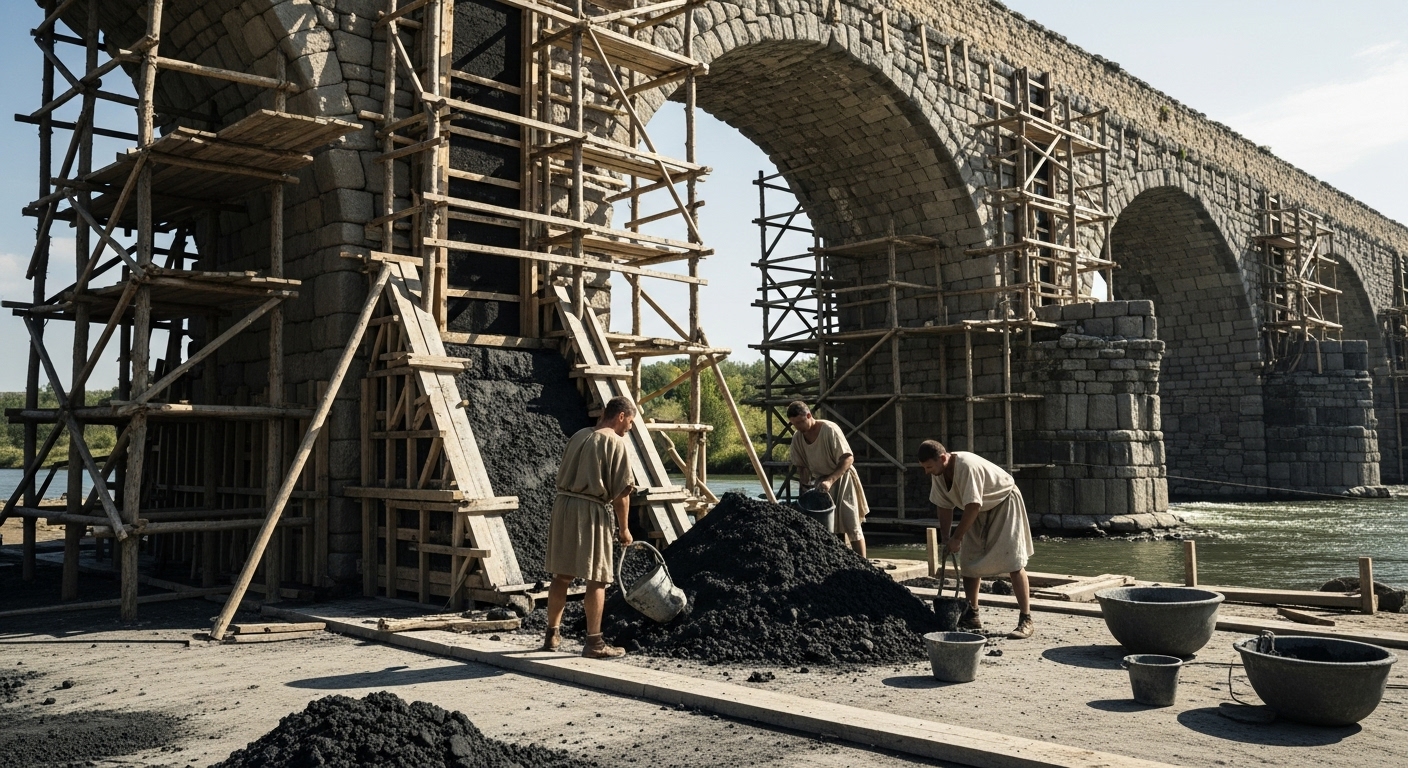Waterproofing has always been one of the most critical challenges in construction. For today’s engineers, the topic is more relevant than ever. With modern structures reaching deeper below ground and rising higher above it, ensuring durability against water penetration is essential for safety, cost efficiency, and sustainability. By tracing the evolution of waterproofing—from ancient Roman ingenuity to modern crystalline technologies—we gain valuable insights that guide smarter material choices and longer-lasting designs.
Ancient Rome: The Birth of Waterproofing Techniques
The Romans are renowned for their advanced engineering and construction methods, many of which are still studied today. They pioneered the use of pozzolanic materials, a volcanic ash that, when mixed with lime and water, created a durable hydraulic cement. This early form of concrete resisted water penetration and was used in iconic structures such as aqueducts, harbors, and baths. The Pantheon and Roman docks still stand as testament to this innovation. Their approach was not only about structural strength but also about creating materials capable of withstanding constant exposure to water.
The Middle Ages to the Industrial Revolution: Practical Approaches
After the decline of the Roman Empire, much of the advanced knowledge of concrete and waterproofing was lost. Builders in the Middle Ages relied more on stone and masonry, with rudimentary mortars. Waterproofing was often achieved using natural materials such as animal fats, oils, bitumen, and tar to coat surfaces and provide water resistance.
During the Industrial Revolution, as concrete resurfaced as a dominant construction material, engineers experimented with various additives and surface coatings to protect against moisture. This period saw the development of bituminous coatings, asphalt layers, and external membranes, which became standard in tunnels, bridges, and early industrial buildings.
The 20th Century: Surface Barriers and Membrane Systems
The rapid growth of urban infrastructure in the 20th century accelerated innovation in waterproofing. Traditional coatings evolved into more sophisticated membrane systems such as:
- Bituminous membranes – widely used for basements and foundations.
- PVC and HDPE sheets – offering flexibility and improved durability.
- Liquid-applied coatings – providing seamless coverage for roofs and exposed concrete surfaces.
While these methods were effective, they functioned primarily as surface barriers, preventing water from entering but vulnerable to punctures, damage, and poor application practices. Maintenance costs and failures due to membrane breaches became major concerns for engineers.
The Modern Era: Crystalline Waterproofing
The limitations of traditional methods led to the evolution of integral waterproofing technologies, the most notable being crystalline admixtures. Unlike surface coatings, crystalline solutions work from within the concrete matrix. When added to fresh concrete or applied as a slurry to hardened surfaces, the active chemicals react with moisture and unhydrated cement particles to form insoluble crystals. These crystals grow within the pores and capillaries, effectively blocking pathways for water.
Advantages of crystalline waterproofing include:
- Permanent protection: Crystals remain active for the life of the concrete.
- Self-healing properties: Hairline cracks up to 0.4 mm can seal automatically upon water contact.
- Resistance to hydrostatic pressure: Suitable for basements, tunnels, water tanks, and below-grade structures.
- Lower maintenance: Eliminates the need for external membranes or frequent re-application.
Conclusion
From the ingenious pozzolanic mixes of ancient Rome to the revolutionary crystalline admixtures of today, the evolution of concrete waterproofing reflects a continuous quest to combat one of construction’s greatest challenges: water ingress. Modern crystalline technology has redefined durability, offering engineers and builders a solution that integrates seamlessly with concrete, reduces lifecycle costs, and ensures longevity even under extreme conditions.
For today’s engineers, the lesson is clear: by understanding the past and embracing advanced technologies, we can design structures that are not only strong but also resilient, sustainable, and built to last.




